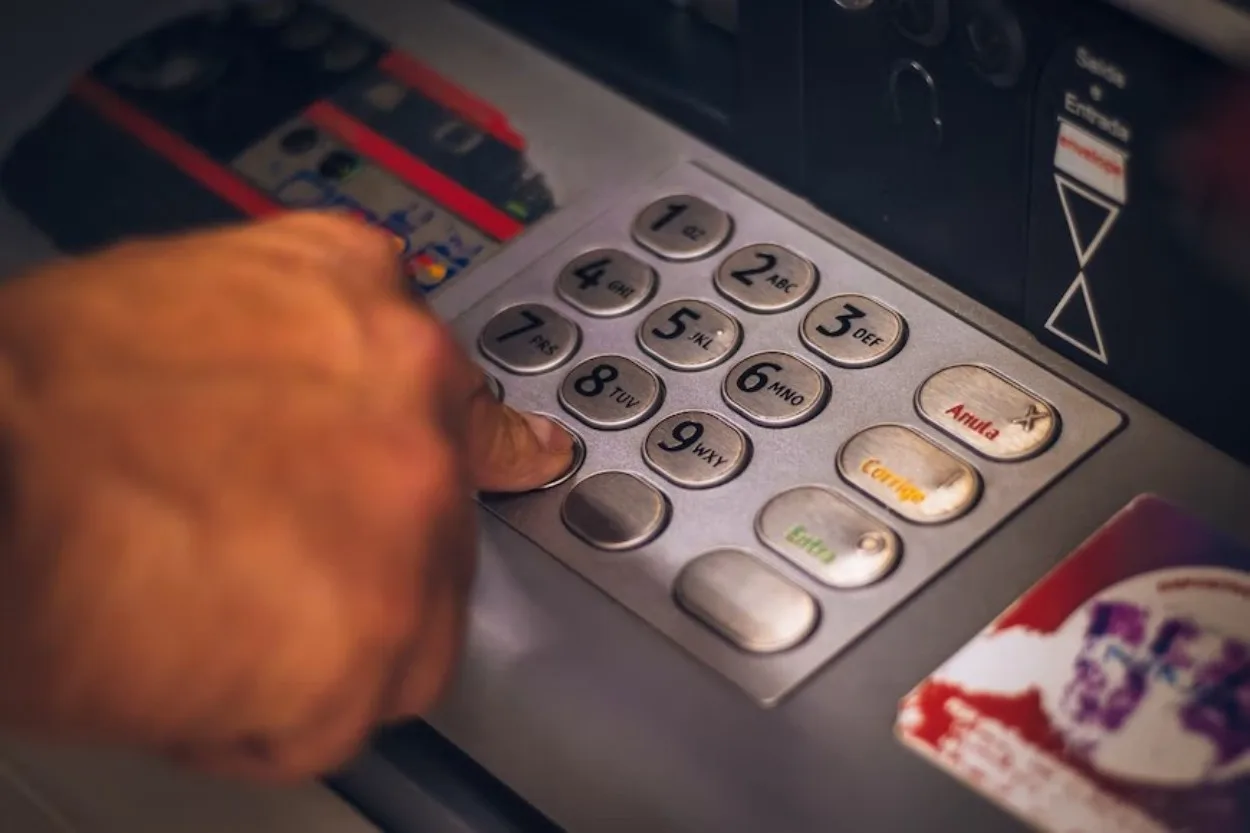A wire transfer enables electronic money transactions between a network of banks or transfer companies worldwide. Before paying for the transaction at the receiving bank, senders identify the recipient, their bank account number, and the transfer amount.
An electronic money transfer is known as a telegraphic transfer or TT. The name, also referred to as telex transfers, dates back to the days when transmitting money entailed sending a printed message via teleprinter.
Electronic transfers include both wire transfers and telegraph transfers. The sole distinction is that a wire transfer always uses the SWIFT network, whereas a telegraphic transfer may or may not do so.
Nowadays, one of the quickest ways to send money internationally is through TT transfers, which may be done online.
Read this blog post to distinguish and learn more about the differences between wire transfer and telegraphic transfer.
What is a Wire Transfer?
A “wire transfer” is the electronic transfer of money from one bank account to another. This method is commonly used to transfer money locally and internationally. This transfer process is also known as “Swift.”
A wire transfer is initiated online or at a bank branch. Wire transfers are often used for home purchases, money transfers between countries, and sensitive transactions.
This process requires the sending bank to provide the recipient’s bank account details, such as their name, address, contact number, account number, and Swift code.
Your account must already have funds for this transaction. The bank will send all the payment information to the other bank through Swift.
Once the bank receives all the information, it will deposit the amount into the recipient’s account. A person who does not have access to a wire transfer bank can also get this done through specialist money transfer agents.
There are two types of wire transfers:
- Domestic wire transfer
- International wire transfer
1. Domestic transfer
Domestic wire refers to the transfer of funds between two banks in the same country and is subject to the rules, regulations, and restrictions of that country’s central bank.
2. Telegraphic transfer
An international wire transfer refers to the transfer of money from a bank in one country to a bank in another country. The transfer is subject to global terms and conditions, including currency exchange rates and transfer fees.
Both types of wire transfers usually require the sender’s and receiver’s bank account information, a routing number, and the amount to be sent. Transfers are initiated through a bank branch, banking platform, or third-party payment service.
Is Wire Transfer Taxable Income?
Wire transfers are not taxable income unless they are for payment of services rendered or for taxable benefits, such as taxable bonuses, severance pay, etc. The wire transfer amount is subject to federal and state income taxes in these cases.
If the wire transfer is a gift or personal loan and does not represent income, it is typically not taxable. It is always recommended to consult with a tax professional to understand the specific tax implications of any wire transfer.

What is the Telegraphic Transfer?
Telegraphic transfer is also known as telex transfer (T.T.). It is used to transfer money abroad. The telegraphic transfer service started when banks used to transfer money abroad.
For the convenience of people, money transfers were done through the “TeleprinterTelex” network, which allows quick and efficient transfers of funds.
This service does not require any paperwork. They exchange messages through electronic machines (which are based on text). This process usually involves a correspondent bank acting as an intermediary between the two banks involved in the transaction.
In this service, the bank transfers funds only to the bank with which it has a commercial relationship. While telegraphic service has made international money transfers more accessible and faster, it is common for business people and the general public to transfer money.
Distinguish Between Wire Transfer and Telegraphic Transfer
| Characteristics | Wire Transfer | Telegraphic Transfer |
| Charges | Domestic charges for wire transfers are usually up to 40 dollars, while international orders are up to 60 dollars. | The charges for telegraphic transfers are determined by the banks and vary from bank to bank. |
| Time Taken | Wire transfers make domestic transfers quick, but international transfers are more complicated and time-consuming. | This service usually transfers money within two to three days. |
| Transactions | Wire transfers transfer money both domestically and internationally. Wire transfers are more commonly used in private transactions such as sending money to relatives, paying a seller to buy a house, paying bills, paying rent, etc. | Telegraphic transfers only transfer international money transactions. which involves the transfer of large sums of money in business transactions. |
| Maximum Limit | Wire transfers usually have higher limits and transfer up to $10,000 per day. For larger transactions, it depends on the bank. | A telegraphic transfer has no limit on how much money can be transferred, usually from thousands to millions of dollars. |
| Conversion of Currency | A wire transfer does not change the currency rate; it transfers the amount unchanged. | A telegraphic transfer transfers money by converting it into another country’s currency. A telegraphic transfer is the best choice if money is to be moved by changing currencies. |
Both wire transfer and telegraphic transfer are terms for transferring money; the difference is that wire transfer allows international and local transfers, while telegraphic transfer works only internationally. A wire transfer is done by traditional methods such as cash or check and is a convenient and secure way to send money.
The telegraphic transfer involves transferring funds through a teleprinter and sending messages through electronic media. Sometimes additional documents and verification are required due to different country regulations and processing times.
In summary, wire and telegraphic transfer are used for the same purpose.

Advantages and Disadvantages of Different Transfer
Wire Transfer
- Transfers are faster through the bank.
- Sending money with a wire transfer service is safe because financial institutions operate them.
- A wire transfer can be initiated online or in person at a bank branch, allowing you to transfer money online from the comfort of your home, provided you have funds in your account.
- International transfers are slightly more expensive than domestic transfers.
- Money is non-refundable after a transfer. The sender will not be able to withdraw cash in case of a change of mind.
- The wire transfer process is complicated and requires a routing number, account number, and other financial information.
- Wire transfer has limited access as these services are unavailable in some areas, making it impossible to transfer money to them.
Telegraphic Transfer
- The speed of telegraph transmission is fast.
- Telegraphic transfer is done through electronic media, so it is easily tracked.
- Telegraphic can be done anytime, anywhere; it is available everywhere.
- Telegraphic fees vary from bank to bank, making it expensive.
- Telegraphic transfer requires more information for verification.
- It is unsuitable for small business people because it involves large money transfers.
What is Swift?
SWIFT stands for “Society for Worldwide Interbank Financial Telecommunications.” SWIFT is used for international transfers, enabling banks and financial institutions to transact and exchange electronic messages with each other securely.
The Swift network is considered secure and reliable. Each bank is assigned a unique Bank Identifier Code (BIC) to identify itself on the SWIFT network. You can use it to pay in any country’s currency.
Swift is good for large-scale businesses. Another important feature of Swift is that its network is available in 99% of places.

Why Telegraphic Transfer is Expensive?
A telegraphic transfer is quite expensive compared to other money transfers as it transfers the transfer amount between different banks before it reaches the intended bank. Each bank charges a service fee.
Another reason is that the bank has to convert the money into another country’s currency before transferring it, and the rate differs from the exchange market. The difference between the two rates increases the margin transfer cost due to the money transmitter having to charge more.
The Cheapest Way to Send Money Internationally
The cheapest way to send money internationally depends on several factors, such as how much money you want to send. You can transfer money directly from your bank account to the recipient’s bank account. Most transfers are made through debit and credit card payments, and transfer services charge additional fees.
Frequently Asked Questions About Wire Transfer and Telegraphic Transfer
Is a Swift Transfer the Same as a Wire Transfer?
Wire transfers include domestic transfers, while Swift is only used for international transfers. Swift is a messaging platform through which transactions between banks take place.
Can we Send a Wire Transfer Without a Swift Code?
A Swift code is required if the wire transfer is to be done internationally. Without a Swift code, the bank will not know where to send the money, and the transfer will not go through.
Will my Bank Reject a Wire Transfer?
A bank may reject a wire transfer for various reasons, such as insufficient funds, incorrect recipient information, technical issues, etc., so check the verification information before transferring.
Can a Telegraphic Transfer be Canceled?
The bank may cancel a telegraphic transfer if it has not yet been processed. However, once transferred, it is not possible to cancel it. If the transfer fails once, a new application has to be made for a re-transfer.
How do I Track a Telegraphic Transfer?
You can check your bank statement via a Swift code or your bank’s online platform. Also, track a telegraphic transfer by contacting your bank directly.
Can Someone Steal my Money From a Wire Transfer?
Wire transfers can be vulnerable to fraud, such as email scams, phishing attempts, or hacking of your online banking account. To protect your funds, it’s essential to verify recipient information, secure your devices, beware of unsolicited requests, and use trusted sources for wire transfers.
Will the Bank Refund me if I Get Scammed?
The possibility of a bank refunding you if you get scammed depends on the bank’s policies and the specific circumstances of the fraud. In some cases, banks may be able to recover stolen funds, but it is not a guarantee, and the chances of recovery may be limited.
Conclusion
- Both transfer methods are safe and reliable, but their charges depend on banks’ and other countries’ regulations.
- The telegraph became an ancient reference for people as time progressed, which is why wire transfer is so popular today.
- If you go to a bank for a money transfer, they will not differentiate between a “wire transfer” and a “telegraphic transfer,” as both terms are used for the same purpose.

